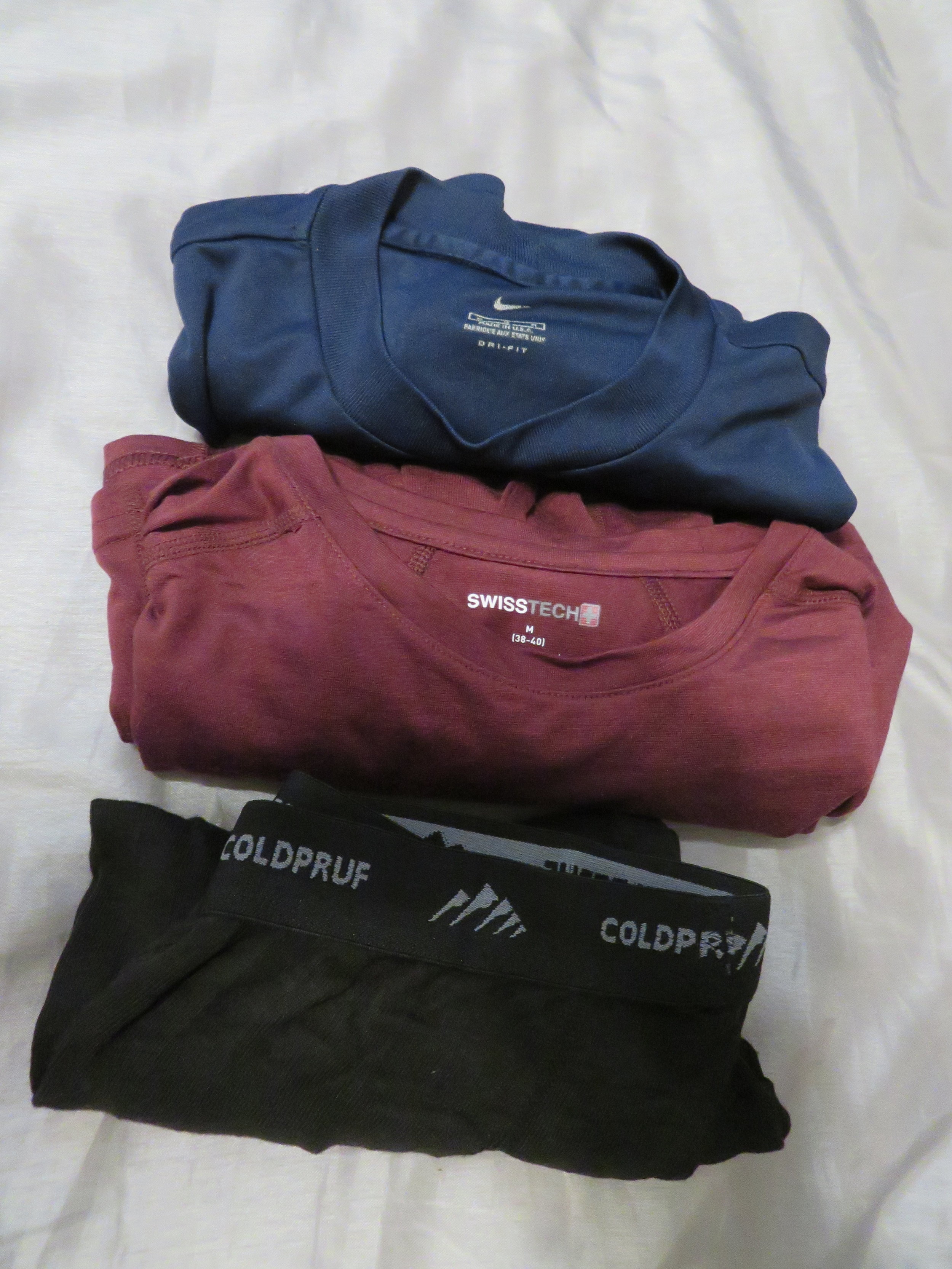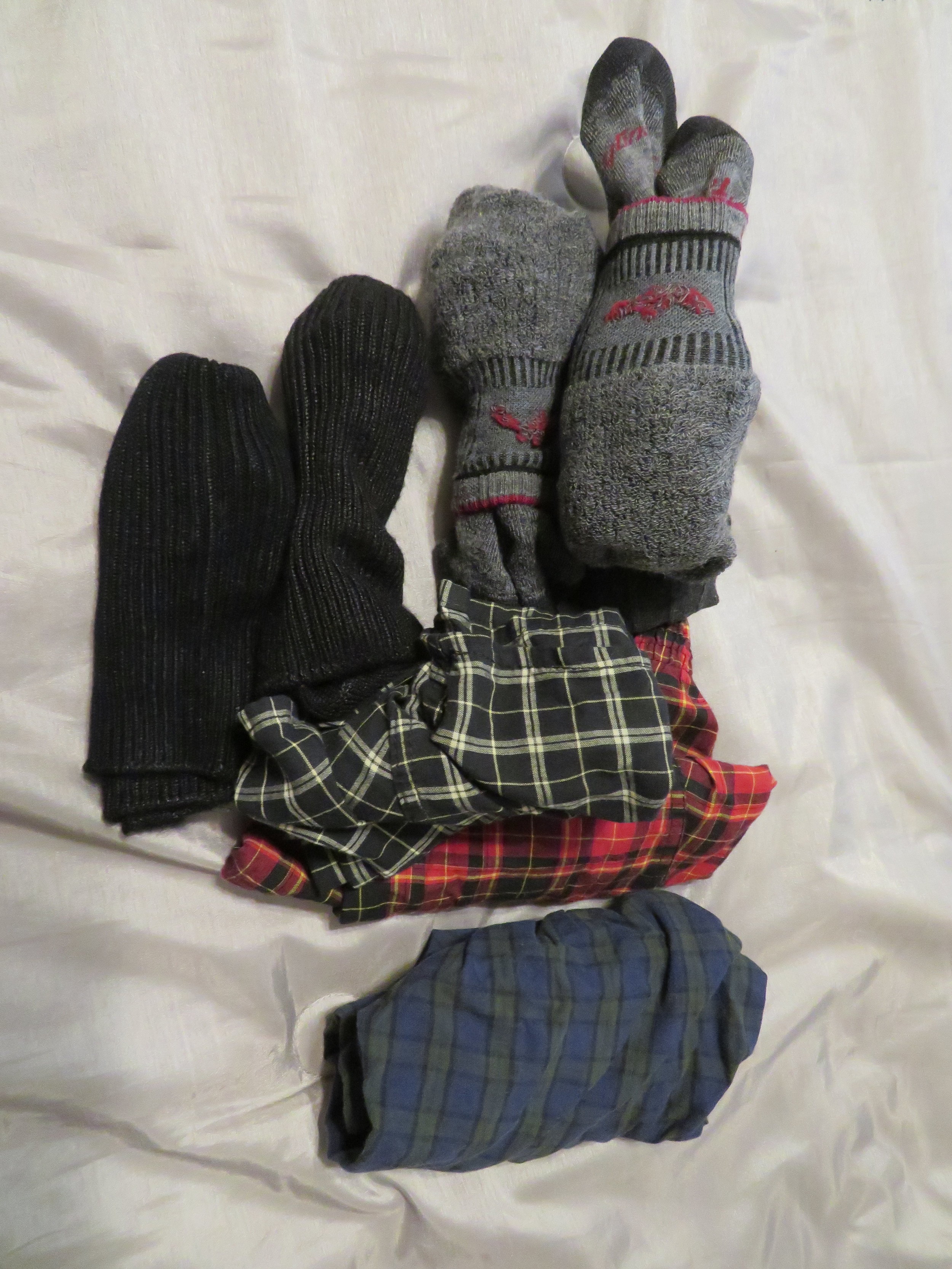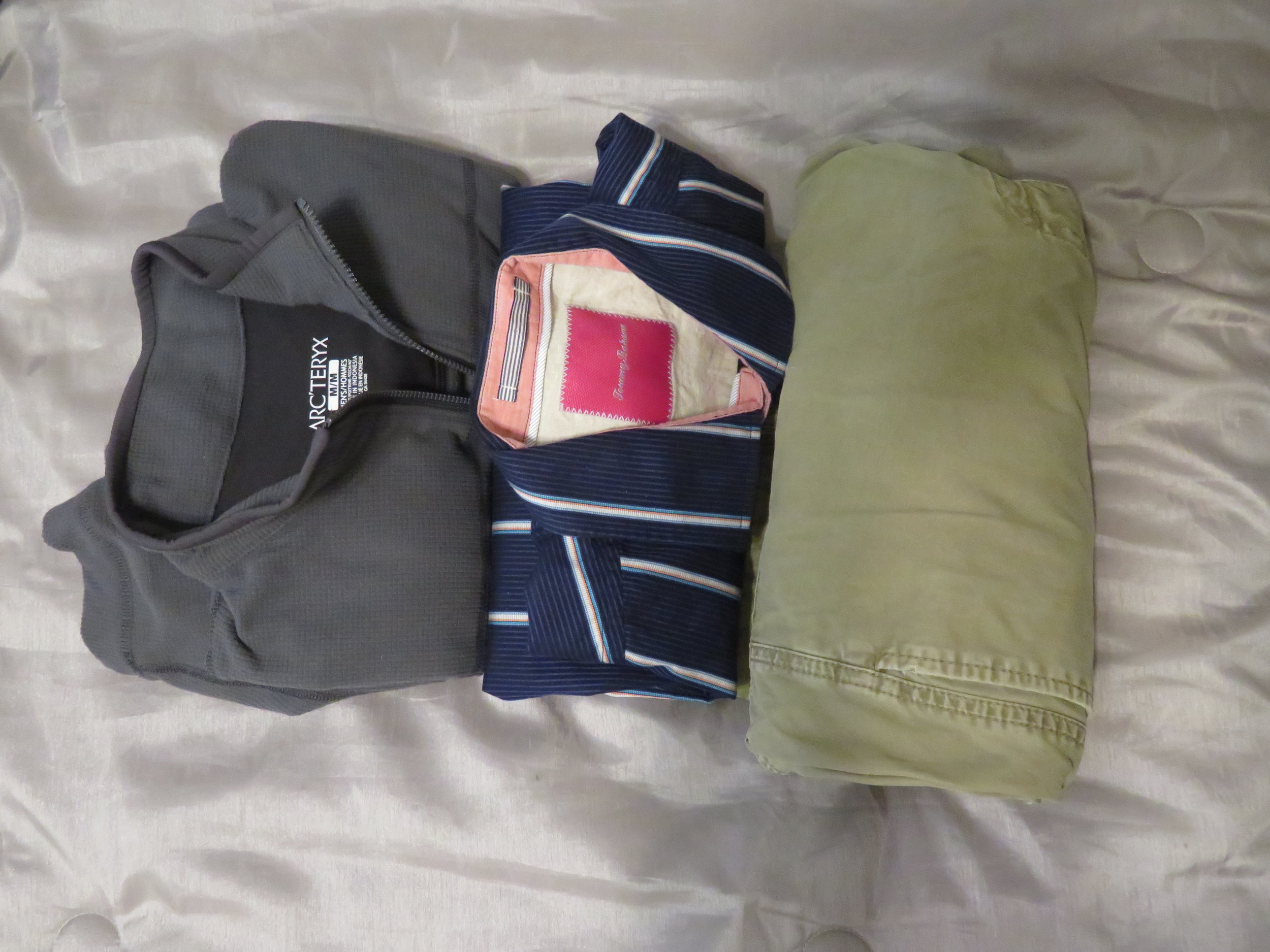Blue View – Kitting Up For the Thames Path
/A month's supply of personal stuff
Update: We’ve now completed the Thames Path, and if you click here, you can read the blog that talks about what we brought that we shouldn’t have bothered with, what we forgot, and what we’d do differently…
We've been giving a great deal of thought to the gear, clothing, personal items and electronics we'll need for our month in England. Since we'll have to carry our entire 'kit', as the Brits would say, for the entire month on our backs, we're only bringing the bare essentials. On the other hand, we don't want to forget anything important. Marcie and I both came up with lists of the things we thought we'd need, then we consolidated and pared it down. First, and most importantly, everything must physically fit into our backpacks. Once that is accomplished, our goal is to keep our loads to under 20 pounds.
The last time we carried backpacks was in the 1980s, and the term ultralight, in reference to backpacking gear, hadn't been invented yet. Our packs typically weighed 40-60 pounds, and it was a struggle just to get them onto our backs. Now it's quite possible to backpack for a week or so with a pack that weighs well under 20 pounds. While we'll be substituting a few changes of clothes for a sleeping bag, tent, stove and a week's worth of rations, it shouldn't be that hard to meet our weight goal.
Our Osprey packs
Packs. The single heaviest items are the packs themselves. We both bought Osprey packs. Marcie's is the Osprey Aura, which has a capacity of 50 liters and weighs 4.1 pounds. Mine is the Osprey Atmos, which also has a capacity of 50 liters and weighs 4.2 pounds. Both are significantly lighter, better fitting and easier to wear than anything we could have purchased in the 80s. We really like them.
David's rain gear - pack cover, rain pants and rain jacket
Rain Gear. This is an important part of our gear since we are, after all, traveling to England, which isn't known for its sunny weather. We bought lightweight raincovers for the packs, and breathable, good quality rain pants for each of us. Both weigh only ounces and pack into small stuff sacks. We're keeping our nice, but heavy rain jackets that we used aboard Nine of Cups. Lightweight rain jackets will be on our list if, after hiking the Thames Path, we decide we'd like to do some extended backpacking.
Our foldable duffles
Travel Gear. We'll be checking our packs as baggage, and in the hope of preventing them from getting damaged, we bought two, very lightweight duffles that will each hold one of the packs. Once we're off the plane, the duffles fold up into quite small packages that we can stow in the packs. We'll need a carry-on bag as well, and we found a 20L day pack that weighs only a few ounces and also folds up into a tiny stuff sack.
Electronics. A few decades ago, we didn't have much need for electronics. Now, we need to keep the blog going, stay in touch, figure out where we are and where we're going, send texts, make calls, and research stuff. Obviously, we can't go away for a month without our electronics. We're taking a small notebook, an iPad, an iPhone, a camera, and all the related chargers, spare batteries, cables and memory cards.
Personal Items. The list of all the stuff we need to keep clean, shaven, sweet smelling, and in fine fit are listed below.
Clothing. We packed lots of lightweight, easily washed, fast drying, versatile layers that should be flexible enough to handle any weather we're likely to encounter. Some we already had, some we found at the local thrift shops, and the rest we bought on sale, taking advantage of the Labor Day sales.
This is the checklist we came up with for our kits:
For an update on what worked, what didn't, what we shouldn't have bothered bringing and what we forgot, click here.













